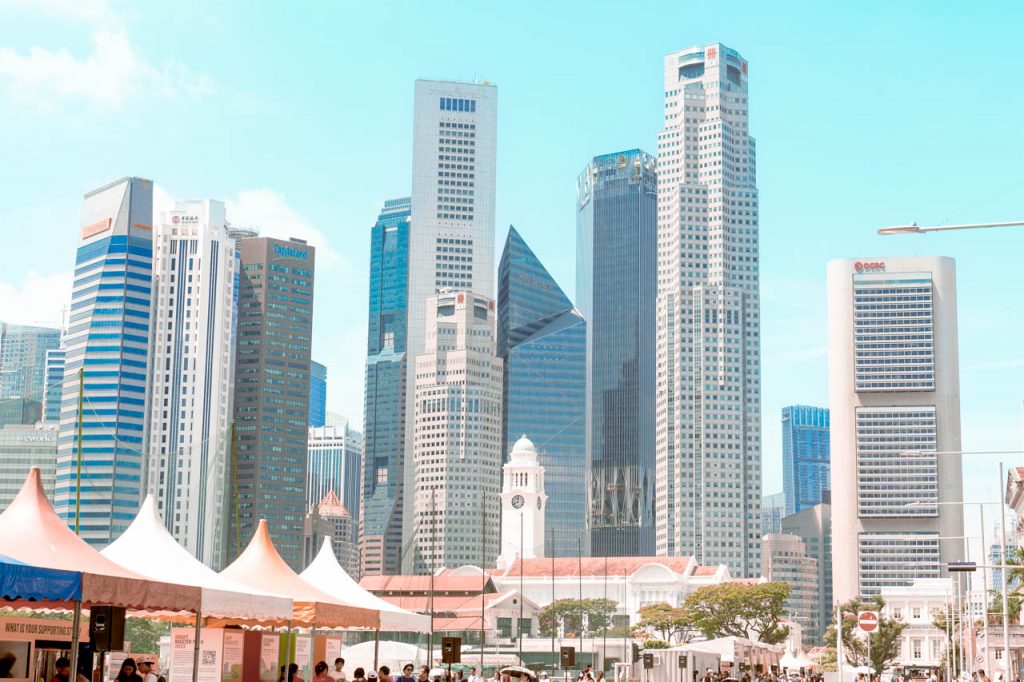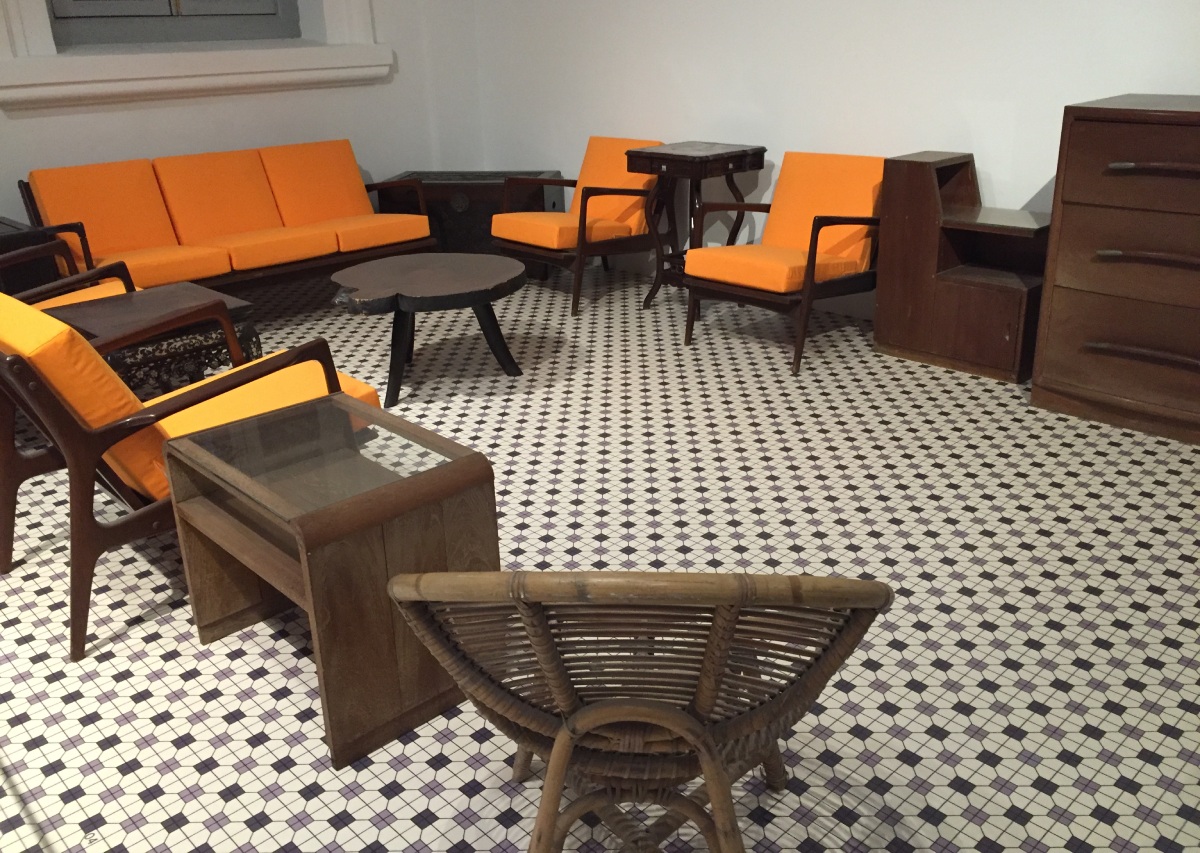Top image: Wikimedia Commons
It’s been over a decade since the fate of 38 Oxley Road was up for debate—the late Lee Kuan Yew said in a 2011 interview that he wanted to demolish the house. After all this time, we still can’t figure out if we should preserve it or not.
But 38 Oxley Road, which was Lee Kuan Yew’s residence from the 1940s till his death in 2015, isn’t the only important place in Singapore. While the National Heritage Board (NHB) continues to assess its worth as a gazetted building of national importance, we should look at other places. What merits a building worthy of preservation, and how do I get my favourite buildings gazetted as places of national significance?
ADVERTISEMENT
Because if we’re going to preserve 38 Oxley Road by making it a physical monument, I have ideas for what else we should keep.
Rejected Suggestions for Places I’d Like to Keep
Peace Centre
As iron must give way to rust, so has Peace Centre fallen to an en bloc sale. But it was once the tallest building in the CBD. If sharing a rickety lift with KTV bargirls on your way to work isn’t worth monumentalising, then I don’t want to know what is. I’d like to un-demolish it, because I have good childhood memories running up and down its (probably) haunted corridors.
Simon Road Market
Simon Road Market, like all markets, was a place for residents to meet, eat, and make a living. It was demolished in 1999, joining an ever-growing list of markets that have been demolished in the past fifty or so years. The only remnant of Simon Road Market is a small statue near Kovan MRT. I’d like to rebuild the market, if possible, because it’d be nice for my family to see it again.
Dog Field Near My House
The field at Parry Hall, best known for being a quasi-recreational field, is being redeveloped–at time of writing, the entire field’s been blocked off for construction of what I believe is an old folks’ home. My dogs haven’t been taking it well, so it’d be nice if we could make this place a monument. We’ve shared some good memories here as owner and pet.
The Place Where Sang Nila Utama First Stepped As He Came To Singapore
My last suggestion for monumentalisation: We should commemorate the soil Sang Nila Utama first stepped on as he hopped off his boat and bumped into a supposed lion.
Some quick Googling later, though, it turns out we might not know where exactly he first stepped his exalted foot onto Singaporean soil. Bummer. (Yes, yes, I know it probably wasn’t a lion at all.)
Okay, so maybe my list is a little unrealistic. There’s a reason why I’m not at NHB processing these important historical sites.
But how are they deciding what deserves to stay and what should be forgotten?
The Price of Progress is Demolition
My mum, who had to move offices last year after 25 years working at Peace Centre, was always ready to move–it was only a matter of time before Peace Centre was demolished, and everyone in the building knew it.
ADVERTISEMENT
I didn’t believe her, because I quite liked Peace Centre. I thought it was too historically significant to demolish.
But it’s not good to get too emotionally attached to any Singaporean building because sooner or later, it will probably be slated for redevelopment.
It’s just one of those fundamental truths that every Singaporean knows—this is the price of progress. Things must be put in the past to let the pragmatic here and now proliferate. And for buildings, the price of progress is destruction; the same way farmers raze their crops to the ground to encourage fertile soil.
In the last months before it closed for good, social movement PlayPan turned it into a no-holds-barred sort of place. They painted the old walls with new coats of graffiti and hosted events for the enjoyment of the community. As a result, the en-bloc wasn’t the death knell I expected. The developers even postponed the original demolition date to accommodate event organisers.
Peace Centre will soon be dust, but I didn’t feel the despondency I expected when I visited last October for a haunted house event. People were laughing, making art, and partying.
If anything, it felt like the community was trying to give it a dignified sendoff–because nothing’s scarier than clinging to the past.
The Founding Myth
But getting rid of a physical place doesn’t mean we have to give up the memories associated with it.
In the absence of physical markers, Singaporeans have taken up archiving efforts to capture slices in time. Some memories can’t be tied to a building, but they’re preserved through projects like the National Library Board’s oral history project to document the pandemic.
If anything, the price of progress—this dazzling impermanence we have to contend with, and the speed at which it all happens—has made us more sentimental. It’s made us treasure memory—keeping and putting in the effort to preserve our history. We’re willing to stack shelves with film canisters containing thousands of photos and memorialise sunset trades to immortalise memories.
There’s more than one way to keep history alive. So if it’s the methodology that’s the problem, we’ll find another way to remember. We always do.
In 2024, when the son of a founding father is feuding with the government over the demolition of a house, I think it’s worth asking: What are we really trying to preserve here? Do we treasure the literal, actual brick-and-mortar that makes up 38 Oxley Road? Or are we trying to preserve what it stands for?
When we say we want to keep 38 Oxley Road, what are we actually trying to capture?
Memorialising 38 Oxley Road gives it a spot in the official national narrative. NHB’s described the house as where “modern Singapore’s destiny was made”. It’s part of the history that’ll be preserved for future National Education (NE) classes; part of the state-sanctioned Singaporean identity.
And I do agree that that house is part of our national narrative—albeit a version that is probably politically beneficial. Monumentalising the place the founding members of the People’s Action Party assembled fuels the corresponding feelings of awe. It feeds this romantic idea of the scrappy little island state that bootstrapped its way to first-world success.
I suppose this narrative, shiny finish and all, is nice to look back on. It makes for a good read, at the very least.
But I still think there’s a responsibility for us to talk about the less-known, less-talked-about parts of our history instead of handwaving those messier parts away.
For instance, it’s a lot easier to erect another statue of Stamford Raffles than it is to confront what it means to be a former colony. It’s simpler to venerate LKY as a hero and plaster his visage on our cars than to add disclaimers that he was, at the end of the day, very human.
We can embark on all the community-led projects we want to highlight parts of history that the state might have glossed over. But the fact is, the history that the state endorses is the history that most people are going to see.
I’m not saying 38 Oxley Road isn’t significant to Singapore’s history. I just don’t know if it’s healthy for our collective history to elevate this one place above so many other ugly-but-authentic parts of Singapore’s history.
Ironically, at this point, if it does get gazetted and preserved, it won’t just be a reminder of Lee Kuan Yew and the PAP’s beginnings. It’ll also remind us of the very public family feud surrounding the house.
Must 38 Oxley Road—the place where “our destiny was made”—be physically preserved for us to appreciate what came out of it?

On Sang Nila Utama and Lions
There’s a reason we don’t remember where Sang Nila Utama saw that lion, and it’s not just because it probably wasn’t a lion. (The real lion was the friends we made along the way!)
We don’t remember because we don’t have to.
Where he was doesn’t actually matter so much as the fact that he was.
Does it really matter that the traders who came to Singapura didn’t know where he first arrived, or what his house might have looked like?
The nitty-gritty of Sang Nila Utama’s life has been eclipsed by the success of that island he once named. His legacy now lies in the prosperity of the island–which I imagine is what every statesman dreams of. Every day that passes is a testament to his impact, and it’s not as if he’ll be forgotten anytime soon; certainly not soon enough to warrant a physical monument.
Shouldn’t that enduring memory be enough?





